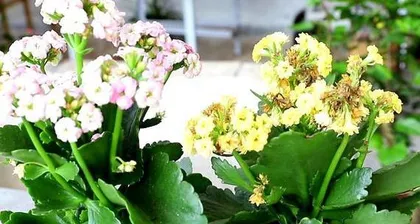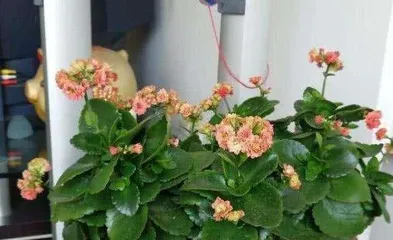Kalanchoe is a beautiful ornamental plant with high medicinal value. However, to ensure it grows healthily at home, some basic planting and care techniques must be mastered. This article will introduce what kind of soil is suitable for Kalanchoe and how to care for it.

The Growing Environment for Kalanchoe
Kalanchoe is native to South America and prefers a warm, humid environment. It is more suitable for growth in southern China, but it can also be planted in northern regions, with attention to insulation.
Soil Suitable for Kalanchoe Growth
Kalanchoe prefers well-draining, fertile, and humus-rich soil. You can mix leaf mold, garden soil, and river sand. Kalanchoe likes acidic soil, with a pH value between 5.5 and 6.5 being most suitable.

How to Adjust Soil pH
If the soil is too alkaline, you can add materials such as ammonium sulfate and ferrous sulfate to lower the pH value. If the soil is too acidic, you can add materials such as quicklime and limestone to raise the pH value. However, it is important to use the correct amount of these materials to avoid harming the plant.
Kalanchoe Planting Methods
1. Choose a suitable pot, you can use a shallow terracotta or plastic pot.
2. Prepare the soil by mixing leaf mold, garden soil, and river sand, then add an appropriate amount of well-rotted cake fertilizer.

3. Fill the pot with soil, lay a layer of small pebbles or clay pellets at the bottom to facilitate drainage.
4. Plant the Kalanchoe seedling in the pot, leaving about 2 cm of space at the top, and gently press down the soil.
5. Water thoroughly to make the soil fully moist.
How to Water
Kalanchoe is relatively drought-tolerant, but the soil should not be too dry. Generally, watering once or twice a week is sufficient. When watering, it should be done thoroughly, but avoid waterlogging.
How to Fertilize
Kalanchoe needs appropriate fertilization during its growth period, generally once every 2-3 weeks. You can choose organic fertilizer or compound fertilizer, but the amount should be appropriate, not excessive.
How to Prune
Kalanchoe grows relatively fast and requires regular pruning. Mainly cut off old leaves, dead branches, and overly dense small branches. When pruning, be sure to retain new shoots and new leaves.
How to Prevent and Control Pests and Diseases
Kalanchoe is susceptible to pests and diseases such as aphids, powdery mildew, and spider mites. Once discovered, timely measures should be taken for control, using pesticides or natural pest and disease control agents.
How to Manage Flower Buds
Kalanchoe flower buds grow rapidly and need timely management, otherwise, it will affect the growth of the plant. Generally, when the flower buds grow to 3-4 cm, they should be pinched off, leaving only 1-2 main flower buds.
How to Deal with Summer High Temperatures
High summer temperatures can affect the growth of Kalanchoe, easily causing problems like wilting and yellowing leaves. You can sprinkle some moist goosefoot grass on the surface of the potting soil, or place some moist pebbles around the plant to increase air humidity.
How to Deal with Winter Cold
Kalanchoe is not very sensitive to low temperatures, but it still needs to be kept warm in cold climates. You can wrap the pot with a thick felt blanket or foam board, or move the plant indoors to keep it warm.
How to Propagate Kalanchoe
Kalanchoe can be propagated by cuttings, division, and layering. Among these, cuttings are the simplest and easiest method. Just select a healthy shoot from the new growth, insert it into moist potting soil, and maintain proper humidity after planting.
How to Troubleshoot Common Problems
If problems such as yellowing leaves, wilting, or poor growth occur, carefully check for issues like over-fertilization, lack of water, or pests and diseases. Take corresponding measures to deal with different problems.
The Beautiful Changes of Kalanchoe
Kalanchoe has a long growth cycle and undergoes various changes during its growth, such as changes in leaf color and flower form. These changes are a manifestation of Kalanchoe's vitality and also increase its ornamental value.
Through the introduction in this article, I believe everyone has a deeper understanding of the planting and care of Kalanchoe. As long as you master the techniques of suitable soil, watering, fertilizing, and pruning, you can ensure that Kalanchoe grows healthily and brings us more beauty and surprises.